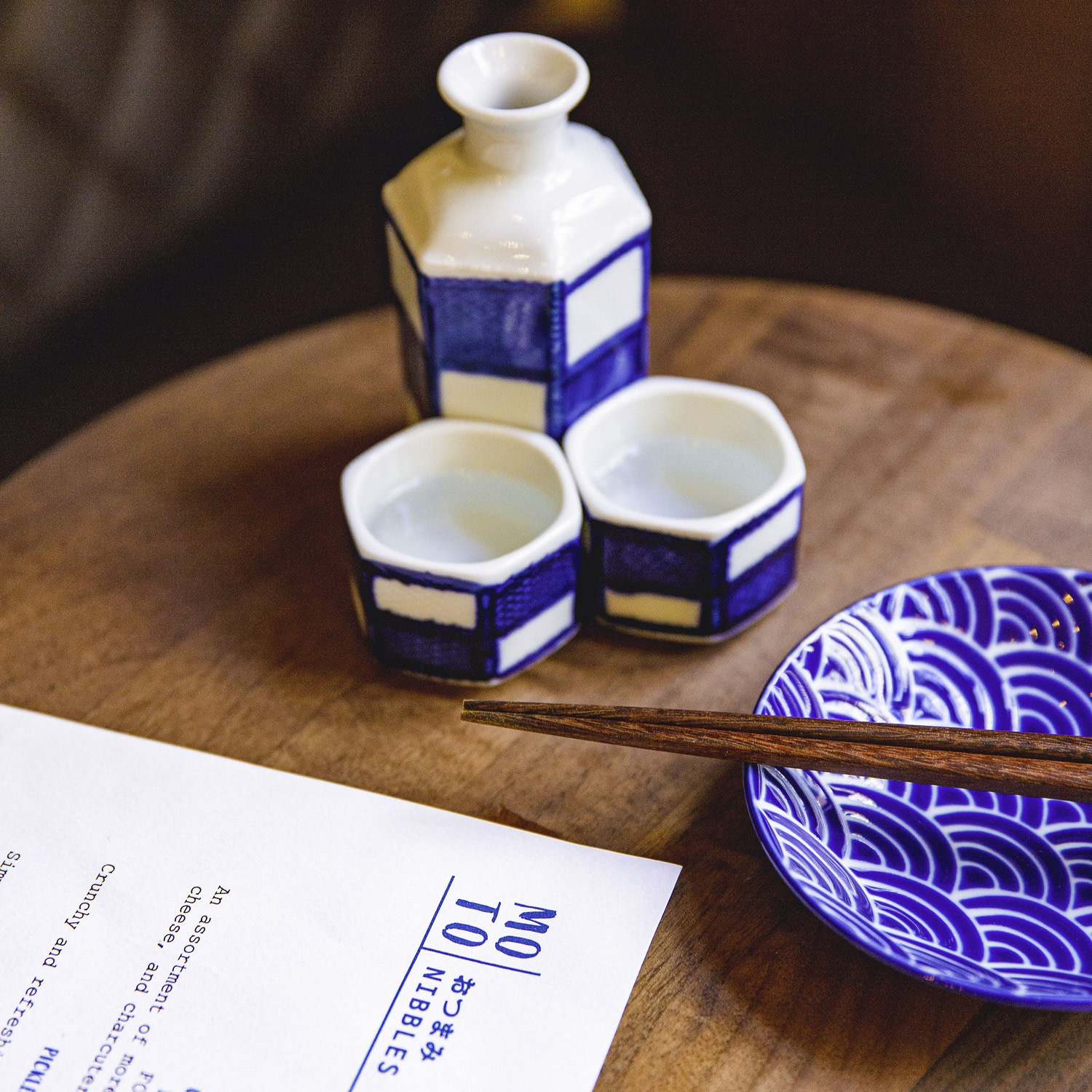Unlike any other alcoholic beverage, one of the most unique aspects of sake is that it can be enjoyed at a wide range of temperatures. And given how the Japanese love the use of poetic prose, they have come up with a beautiful word to describe each serving temperature.
As a sake enthusiast yourself, perhaps you may be keen on knowing what these terms are and how playing with differing temperatures can elevate your sake drinking experience. It truly is magic, how the very same sake transforms depending on whether it is chilled or heated!
Yuki-bie 雪冷え
‘Snow’ 5°C
Most suitable for nama, nigori and sparkling sake. Any sake seems crisp, dry and refreshing when chilled to this degree but delicate aromas and flavours will be muted. Some sake may seem too bitter.
Hana-bie 花冷え
‘Flower’ 10°C
Floral and fruity sake flourish at this temperature. Even richer, more savoury sake will seem more fresh.
Suzu-hie 涼冷え
‘Refreshing’ 15°C
Sweetness and acidity seem perfectly balanced at this temperature for any sake with delicate aromas and flavours (i.e. ginjo, daiginjo).
Jo-on 常温
‘Room Temperature’ 20°C-29°C
The higher the temperature, any bitterness present becomes subdued. Aromas open up, transitioning from fresh to rich, while the texture softens and umami and sweetness increase on the palate.
Hinata-kan 日向燗
‘Basking in the Sun’ 30°C
Most sake with notes of dairy (i.e. cream, yoghurt, butter), nutty (i.e. yeast, roasted nuts, biscuits), savoury (i.e. soy sauce, truffle, leather) and/or sweet (i.e. chocolate, candy floss, honey) will benefit from this temperature.
Hitohada-kan 人肌燗
‘Body Temperature’ 35°C
The sweetness of sake peaks at this temperature. At higher temperatures, the sweetness gradually decreases, replaced by the sharper taste of alcohol.
Nuru-kan ぬる燗
‘Luke Warm’ 40°C
Umami notes from the rice and koji open up the most at this moderately warm temperature.
Jo-kan 上燗
‘Elevated’ 45°C
Sake feels more full bodied and alcoholic, while the flavour profile starts becoming drier and sharper.
Atsu-kan あつ燗
‘Hot’ 50°C
Enjoy even sharper flavour, drier texture, and higher acidity.
Tobikiri-kan 飛び切り燗
‘Through the Roof’ 55°C-60°C
Super-dry. The original flavours and aromas characteristic to the sake at hand are very hard to appreciate at such hot temperatures.
When investigating the effects of temperature on sake, the general rule of thumb is that the colder the sake, the alcohol level seems lower, and the drier and fresher the sensation. It is better suited for delicate types of sake that will lose their fruity and floral aromas and flavours when heated. The higher the temperature, the sake will taste more intense, umami, sweet, alcoholic, and full bodied. Hot sake, or “kan-zake,” might be preferred not only for those that appreciate sake with a richer profile but when eating intensely flavoured and heavy-textured dishes, such as hotpot or grilled meats. It is also the most comforting beverage on a cold winter’s day!
At this point, we should debunk one myth we have heard circulating through the grape vines: hot sake gives you a hangover more than cold sake. Correction, THEY DO NOT! The only difference between cold and hot sake is the pace in which the alcohol takes an effect on the human body. Since alcohol is absorbed by the body only when it reaches the same temperature as the body, when you drink cold sake, absorption begins only after the alcohol has been sufficiently warmed in the stomach, thereby taking longer for you to feel the effects of alcohol. On the other hand, alcohol absorption begins sooner when drinking hot sake as it is closer to your body temperature, therefore you will feel drunk sooner. When you think about this, drinking hot sake should actually decrease your chances of getting a hangover as you can (hopefully) pace yourself! As a certain saying in Japan goes – 『親の小言と冷酒は後から効く』or “only later do we appreciate the wisdom shared by our parents and the effects of cold sake!”
The custom of enjoying the flavour differences between varying temperatures is nothing new in Japan. Supposedly as far back as the Edo period (1603-1868), each restaurant had an “okan-ban,” or a hot sake professional similar to a modern-day sommelier. Even to this day, you can find professionals called “okan-ban” at certain sake specialty establishments throughout the country.
Without access to an okan-ban outside of Japan, you may like to try heating sake from the comfort of your own home. If so, simply boil water in a pot and place inside a tokkuri (sake carafe) with your sake of choice to warm the sake gradually. Then, use a thermometer to check the temperature. Although sake can technically be warmed in the microwave, we do not recommend this method as the sake may not be heated evenly, which will affect the overall taste.
